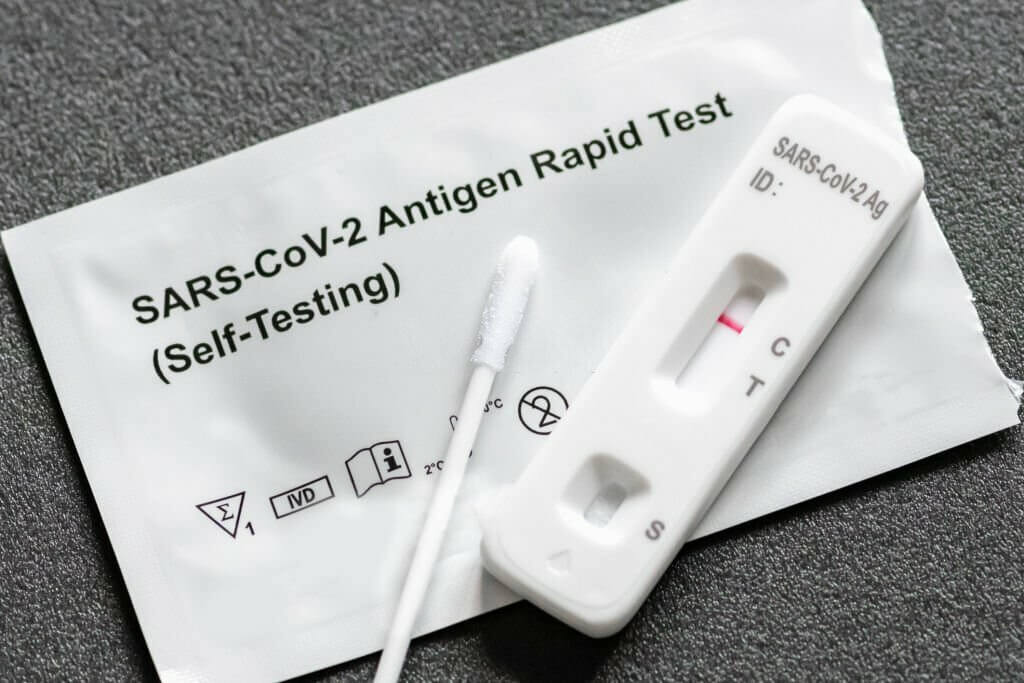Simoa Technology: Optimizing Nucleocapsid Antigen Testing for SARS-CoV-2

The COVID-19 pandemic has shown the crucial need for accurate, rapid diagnostic testing to identify and isolate infected individuals. While polymerase chain reaction (PCR) assays detect viral RNA and serve as the gold standard, supply constraints and complexity limit access. Seeking alternatives, a Danish research team collaborated to develop and optimize nucleocapsid antigen assays leveraging the sensitivity of single molecule array (Simoa) technology. Their findings pave the way for antigen quantification comparable to PCR tests.
Assembling a Multidisciplinary Team
The project brought together the complementary expertise of the Lillebaelt Hospital Departments of Biochemistry, Immunology and Clinical Microbiology with funding from the Danish Ministry for Research. IVD consumable R&D company Mantacc provided key support enabling assay development by supplying transport media tubes to collect patient samples.
The researchers set out to harness Simoa’s ultrasensitive antigen detection to potentially match PCR’s accuracy for SARS-CoV-2 diagnosis. With 1000X higher sensitivity than conventional immunoassays, prior studies showed Simoa’s promise for advancing infectious disease testing.
Progress Through Collaboration
Work began by producing recombinant antigens and evaluating antibodies from Sino Biological to optimize a research-use-only nucleocapsid assay. Extensive optimization minimized background while maximizing signal, achieving 0.02 pg/mL sensitivity. In parallel, Quanterix Corporation developed a automated prototype kit boasting 0.15 pg/mL detection.
Both assays quantitatively measured nucleocapsid levels via reference antigen standards. Dilutions of SARS-CoV-2 culture enabled comparing analytical sensitivity to PCR through experiments measuring RNA. Detection limits of 100-200 copies/mL matched typical PCR ranges.
Validation with Clinical Samples
To evaluate real-world performance, the team tested remnant samples from 148 PCR-positive and 73 -negative oropharyngeal swabs provided by Mantacc’s transport media tubes. This validation step was crucial for understanding clinical sensitivity with patient material spanning various viral loads.
The Quanterix assay detected 96% of positives with no false positives at a 0.1 pg/mL cut-off. Meanwhile, the in-house assay achieved 95% sensitivity and 100% specificity with a 0.01 pg/mL cut-off. Both showed high quantitative correlation to PCR cycle thresholds.
While five PCR-positive samples were missed, they had high cycle thresholds between 27-35. The cause may be superior RNA sensitivity for PCR or detection of non-infectious virus - unfortunately, inadequate sample remained to retest via PCR. Still, overall performance matched PCR’s clinical sensitivity.
Opportunities to Apply Learnings
By collaborating, the team achieved a major milestone developing rapid, accurate antigen assays leveraging Simoa’s groundbreaking sensitivity. Findings provide a reference methodology for evaluating lateral flow and point-of-care tests. Meanwhile, optimizing flexible cut-offs balances sensitivity and specificity for evolving needs.
Learnings also set the stage for manufacturers like Mantacc to incorporate antigen detection in transport media to enable universal collection. Quantifying viral load via antigen could give insights into disease progression. Experience creating sensitive Simoa assays may inspire expanding infectious disease menus to combat future threats.
Ultimately…
This collaborative spirit and drive for innovation positions diagnostics for the next wave of the COVID-19 fight while bolstering pandemic preparedness. Nucleocapsid antigen assays mark a new chapter in maximizing diagnostics to control infectious disease.
Click to View → Mantacc Non-inactivated VTM Solution
References
Olsen DA, Brasen CL, Kahns S, Madsen JB, Kierkegaard H, Christensen H, Jensen A, Sydenham TV, Møller JK, Madsen JS, Brandslund I. Quantifying SARS-CoV-2 nucleocapsid antigen in oropharyngeal swabs using single molecule array technology. Sci Rep. 2021 Oct 13;11(1):20323. doi: 10.1038/s41598-021-99807-7. PMID: 34645907; PMCID: PMC8514595.









